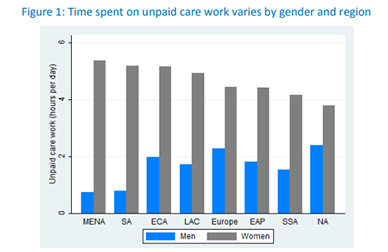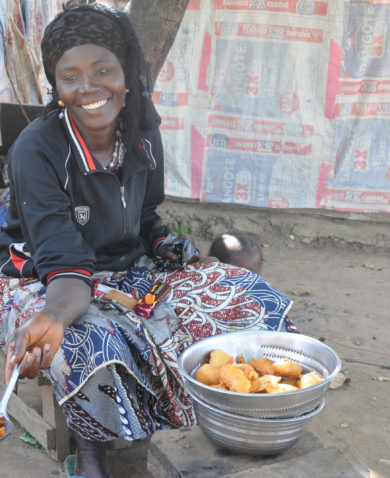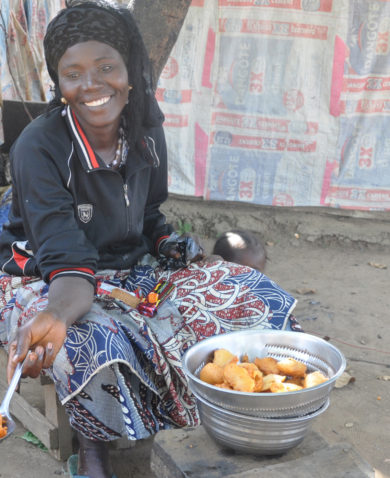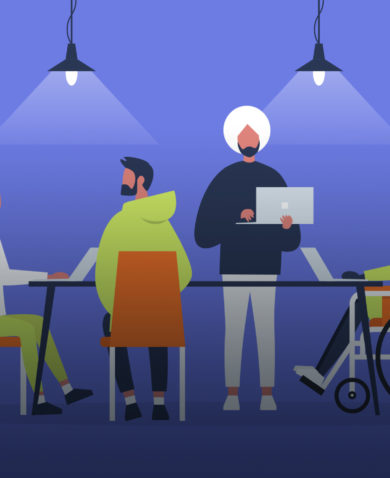
What About Unpaid Care?
July 13, 2017 | 3 Minute ReadShould inclusive market systems programming address the economic burden of women's unpaid care work? Julian Guelig weighs the pros and cons.
Around the world, mothers, wives, daughters, and sisters support the resiliency of their communities in the face of adversity and inequality. As a member of the business development team in the East and Southern Africa Division at Chemonics, I’m exposed to the cross-cutting interventions designed to support women throughout our work across all technical areas. There is now a debate within the development community that reducing and redistributing unpaid care work (UCW) is a key factor to enabling women’s economic empowerment. Last month at the SEEP Women’s Economic Empowerment Global Learning Forum (WEE), I had the opportunity to hear high-profile WEE participants partake in an Oxford-style debate addressing women’s UCW in inclusive market systems programming. The result left me reflecting on the importance of this issue not only in our work in development but also our society.
To date, women’s UCW has largely been ignored by economic and social public policy initiatives. So what is unpaid care work? UCW is not only a factor in enhancing women’s economic empowerment, but it is critical for an individual’s security, their family’s well-being and society at large. It is defined as the time and energy in supporting human well-being arising out of social obligations. This includes universal responsibilities such as child and elder care, cooking, cleaning, and washing.

According to the OECD, women around the world spend an average of 4.5 hours a day on unpaid labor, almost double that of their male counterparts. In developing countries, this is exacerbated by the traditional roles women hold in society, with women often spending seven to 10 more hours a day than their male counterparts on UCW. So the question remains: Should inclusive market systems approaches for economic growth address women’s UCW? A market system is a dynamic space which incorporates resources, roles, relationships, rules, and results in which public and private actors collaborate and compete for the production, distribution, and consumption of goods and services, and UCW undeniably affects that market system. Below is a snapshot of both sides of the arguments.
The unequal distribution of UCW between women and men represents an infringement of women’s equality and needs to be addressed in market systems programming
So why should unpaid care labor be addressed in market systems? For starters, the Sustainable Development Goals (SDGs) highlight UCW as a target under SDG 5, which specifically calls for recognition of unpaid care and promotion of shared responsibility among family members. In order to have a healthy, productive workforce, a society must have equal participation between both sexes. Studies show that when women’s UCW shrinks from five to three hours a day, labor force participation increases 10 percent. Every minute more that a woman spends on UCW represents one minute less that she could be potentially spending on market-related activities or investing in her educational and vocational skills. So what can market systems do to help equalize the burden of UCW? The first step is acknowledging the constraints of UCW to be able to address the issues uncovered in the analysis of the target market system. Programs can then work to incentivize both private and public sector actors to address UCW by, for example, advocating for the creation of more inclusive labor laws or providing child care facilities in the workplace. In summary, recognizing and valuing more even distribution of UCW is a viable way of increasing overall human development.
UCW is an extremely important issue but market systems programming isn’t the best place to address it
The opposing side of this argument focused on whether market systems is the proper starting point for addressing this issue. Opponents’ arguments revolved around focusing market programming on more targeted issues such as social norms, reproductive health, and equality in decision-making. Concentrating efforts on UCW takes away from other gender issues and may potentially worsen the situation of those less privileged. Because it’s deeply rooted in cultural norms and history, changing UCW may not the role of market actors. A longer-term change would be better achieved by the state and requires broad policy changes beyond market systems. Lastly, participants argued that market systems programs simply aren’t ready to address UCW yet. UCW is such an important issue, it can’t be hastily rushed into and must be addressed by a comprehensive approach, encompassing economic, social, and political factors.
At the end of the debate, WEE participants were asked to self-poll which argument resonated strongest. Exiting to the left signified in favor of UCW being addressed in market systems programming and exiting right was opposed to UCW being addressed in market systems programs. So, which door would you exit through? Feel free to add in the comments below which side you would exit and why.























